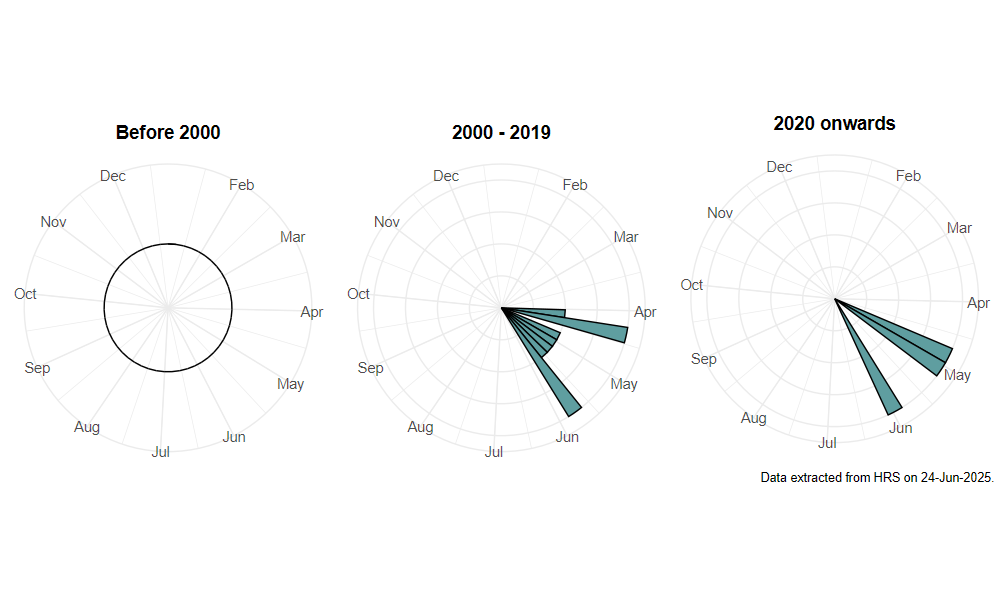Syrphus nitidifrons Becker, 1921
Identification
Identification difficulty = 4. ![]()
![]() according to Ball & Morris, 20241
according to Ball & Morris, 20241
Biology
Biology poorly known, but it is reported to be a conifer associate. Speight(2017)2 reports that it is rarely seen in numbers and suggests that this may mean that it is a canopy species that rarely descends to lower levels.
Flight period
The following plots show the number of unique records per week excluding those reported to be of immature stages.

Status
Occasional migrant.
Distribution
Added to the British List by Parker(2010)3. This species is reported to have been spreading westwards across Europe and its arrival in the UK was not unexpected. Since the original record there have been a number of reports of this species from a wide geographic spread across southern England and the East Midlands.

-
Ball, S., & Morris, R. (2024). Hoverflies of Britain and Ireland. WILDGuides (3rd ed.). Oxford: Princeton University Press. ↩
-
Speight, M. (2017). Species accounts of European Syrphidae ( No. 97). yrph the Net, the database of European Syrphidae (Diptera) (p. 294). Dublin: Syrph the Net publications. Retrieved from https://pollinators.ie/wordpress/wp-content/uploads/2018/05/StN-2017-Species-Accounts.pdf ↩
-
Parker, M. (2010). Syrphus nitidifrons Becker 1921 (Diptera, Syrphidae) new to Great Britain. Dipterists Digest (Second Series), 17, 145–146. ↩